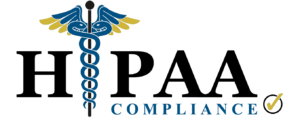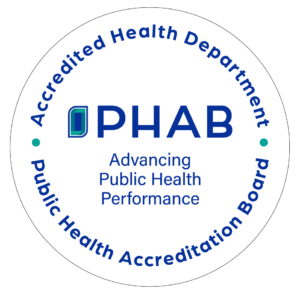Phase 2 consists of the following components:
- First Steps
- Activity 1: Identifying Essential Functions
-
Activity 2: Identifying Vital Records, Systems, and Equipment
-
Activity 3: Naming Key Personnel
-
Activity 4: Selecting an Alternate Facility
-
Activity 5: Determining the existence of Interoperable Communications
First Steps: Before essential functions can be identified, a business or organization needs to know the likely impacts of various disruptions. This includes:
-
Estimating the quantitative or economic losses
-
Determining the qualitative impact to include the psychological effects on employees and detrimental impacts on an agency’s reputation
Business Impact Analysis (BIA) is created to this end and includes four parts:
-
Identifying the assets required to perform the agency’s core mission
-
Identifying the potential hazards or threats to those assets
-
Determining the agency’s susceptibility to effects of each hazard or threat
-
Determining the potential impact of each threat
Risk Analysis (RA) is:
-
Evaluation of the likelihood that certain disruptions will occur, and
-
The controls to reduce organizational exposure to such risk.
-
Performed jointly with the vulnerability assessment in a BIA, though a separate tool
Activity 1: Identify Essential Functions
An essential function is one that must continue with minimal or no disruption. It is usually some vital service that the company provides. One way is to identify essential functions using the BIA asset identification. The BIA focuses on functions and their criticality. The BIA uses a four step approach.
1. Identify all functions:
- Identify areas of responsibility (Worksheet 10)
- For each, list the functions performed and provide a brief description of the activities completed under each. (Worksheet 11)
2. Identify essential functions:
-
The criteria for selecting essential functions should be decided upon.
-
Senior management should approve the final list of essential functions.
-
See Worksheet 12
3. Determine essential function resource requirements:
4. Prioritize essential functions:
Prioritization depends on criticality of each essential function and the sequence for recovery of essential functions and their critical processes. Time criticality:
-
Determined by the time a function can be suspended before it adversely affects the organization’s core mission
-
Measured by a recovery time objective (RTO), the period of time with which systems, processes, services, or functions must be recovered after an outage.
Sequence for recovery:
-
Utilize Worksheet 16
-
With the RTOs determined for each essential function, list them in ascending order with shortest first
-
Those upon which others depend should also receive a high priority
-
Present the list to senior management for final approval
Activity 2: Identifying Vital Records, Systems & Equipment
Vital records are those, that if damaged or destroyed, would disrupt agency operations and information flow, cause considerable inconvenience, and require replacement or recreation at substantial expense. Personnel must have them to carry out essential functions. Vital records could be in paper, electronic, or microfilm form. There are five major tasks:
- Write an assessment sub-plan
- Develop forms for gathering information
- Identify vital records
- Review protection needs for each vital record and compare with current program
- Develop a restoration and recovery sub-plan
Vital Records Program Basics:
- Assign responsibility for program implementation and execution
- Ensure vital records are evaluated on the basis of their necessity in carrying out essential functions
- Ensure that emergency operating records vital to the continuity of essential functions during an emergency will be available at alternate work sites if they are activated
- Safeguard legal and financial records essential to the preservation of legal rights and interests of individual citizens and the government
- Ensure vital records are easily retrievable and maintainable
- Ensure the current inventory of vital records is easily accessible
- Outline procedures for, and prioritize recovery of, vital records during an emergency
- Ensure damage to vital records during an emergency is minimized
- Provide procedures for recovery of damaged records
Identifying Vital Records:
-
Records needed to perform essential functions were identified in Worksheet 14
-
Using it, determine which records are necessary for emergency operations and/or the recovery or the continuation of essential functions
-
List them on Worksheet 17
-
Use Worksheet 18
-
Determine and select protective methods
-
Examine current backup and retention schedules for each vital record and determine the necessity of backing up files more often or retaining files for longer periods
-
Use Worksheet 19
-
There may be situations were protection methods fail and vital records are lost or damaged
-
Must have a vital records recovery sub plan
Vital Systems and Equipment – This is centered on two tasks:
-
Identify vital systems and equipment
-
Select and arrange protection methods for them
COOP plan should have enough detail that non-technical employees can recover basic systems during an emergency. To identify vital systems and equipment:
-
Use Worksheet 20
-
Identify those systems and equipment that are essential to the functioning of the business or organization
-
A system’s or piece of equipment’s use may help determine whether or not it is vital (Ex. Snowplows are not needed in summer)
-
Consider the critical processes and services that these systems support
Select and arrange protection methods for them:
-
Use Worksheet 21
-
Will depend on the nature of the system or equipment
-
Include maintenance programs that regularly test these systems and equipment and the associated protective measures for optimal performance
Activity 3: Naming Key Personnel
Key personnel are positions that are vital to the mission of the business or organization and cannot be left unattended. Successful planning and management ensures continued effective performance by making provisions to replace people in key positions. Naming key personnel consists of two components: delegation of authority and order of succession. Delegation of Authority specifies who is authorized to make decisions or act on behalf of the department or agency head or other key individuals. It ensures rapid response to an emergency situation that requires COOP plan activation and involves several tasks:
1. Identify Authority to be Delegated
- Use Worksheet 22
-
Two categories of authority should be addressed in a delegation of authority plan which includes emergency authority and administrative authority.
2. Establish Rules for Delegation of Authority
-
Use Worksheet 23
-
Requires a list of conditions or events that will trigger delegation of authority
-
Should be tied to level of threat or category of emergency
-
Detail how designee will assume authority and how staff will be notified of delegation
3. Identify Limitations on Authority to be Delegated
-
Use Worksheet 23
-
Identification of limitation on the authority
-
Often are restrictions on the duration, extent, or scope of the authority
Order of Succession provides provisions for the assumption of leadership positions when the incumbents are unavailable or unable to execute their duties. Order of succesion allows for an orderly transition of leadership. It is necessary to have an alternate for each key position but also non-management personnel who perform critical functions. Key positions should be identified by position title. To prepare an Organizational Chart, use Worksheet 24. Organization charts are needed for determining an order of succession. When creating an organizational chart, ask the following questions:
How does this function contribute uniquely to the organization’s mission? To identify essential functions and key positions, use Worksheet 25. There are several methods that can be used to identify key positions :
-
Questioning management and staff
-
Use historical evidence
-
Previous crisis experience
Once key positions have been identified, determine the following:
-
Who occupies these positions now?
-
What are their qualifications and backgrounds?
-
What are the work requirements for key positions?
-
Where are the key positions located in the organization?
To determine Orders of Succession for all key positions, use Worksheet 26. Determine the positions which would assume the authority of the key position if it became vacant unexpectedly. The same successors can be named for different key positions, so long as they are not the first successor for several of these positions.
An emergency may force a work space to be evacuated. If that occurs, key personnel should relocate to an alternate work site such that the organization can continue its essential functions. Relocation may occur without warning (i.e., tornado). As such, every effort should be made to pre-position, maintain, or provide for minimum essential equipment for continued operations of essential functions. Selecting an Alternate Facility:
| Step | Time Frame | Activity |
| Step 1: Activation and Relocation | 0-12 hours | Abandonment of primary facility
Relocation to alternate work site |
| Step 2: Alternate Facility/Worksite | 12 hours to Termination of Emergency | Conduct operations at the alternate work site
Limited to essential functions
|
| Step 3: Reconstitution | Termination and Return to Normal Operations | Return to regular organization quarters
Resumption of normal operations
|
Source: MEMA Preparing for an Emergency: Continuity of Operations (COOP) Planning for Public Institutions
Three Types of Sites:
- Hot: Computer, telecommunications, and environmental infrastructure already in place
- Warm: Equipped with some hardware and communications interfaces, as well as electrical and environmental conditioning that can provide additional software or customization if needed
- Cold: Environmental infrastructure necessary to recover essential functions or information systems are in place but computer hardware and telecommunications equipment are not preinstalled
To select an alternate facility, consider the geographic impact of the disaster. For a localized event, select a site 0 – 60 miles from the current location. For a widespread event, select a site 60 – 150 miles from the current location. Criteria for Selecting an Alternate Facility (See Worksheets 27 and 28):
Source: MEMA Preparing for an Emergency: Continuity of Operations (COOP) Planning for Public Institutions |
What if fiscal constraints make having an alternate work site impossible? Consider entering into a cooperative or mutual aid agreement:
- Cooperative agreement: contract for use of another organization’s facility in an emergency.
- Mutual aid agreement : two organization’s agree to help each other in the event of an emergency
- With customers and business partners – EXTERNALLY
- With leadership and co-workers – INTERNALLY
- Even if primary means of communications fails
Step 1: Communication Systems Supporting Essential Functions
- Review the critical processes and services that support essential functions
- Note that some functions have communication methods that are peculiar to themselves
- Also, remember internal communication links as well as inter-organization systems
- See Worksheet 29
- Uninterruptible power supplies
- Air conditioning systems
- Fire and smoke detectors
- Water sensors for computer and telecommunications rooms
- Gasoline or diesel powered generators
- Fire suppression systems
- Emergency master system shutdown switch
- Technical security controls
Alternate Modes of Communication (Use Worksheet 31):
-
Should have alternative providers and/or modes of communication in place to fill any gap
-
Check with service providers for Telecommunications Services Priority (TSP)
Step 3: Create a Chain of Communication for Emergency Situations
- Interoperability – the ability of a system or a product to work with other systems or products without special effort on the part of the user
- Public Communication – COOP plan should include information on how to communicate with customers or clients. Furthermore, take great care in managing contacts with the media to avoid the spread of misinformation and unfounded rumors.
Go to Phase 3: Design and Development
(Worksheet 32)Refers to the ability to rapidly recall personnel. Utilizes a pyramid alert roster, a cascading list of personnel within the organization, in order of notification. Other Considerations:Preventative Controls (See Worksheet 30) – Attempt to avoid the occurrence of unwanted disruptions such as data loss through power outages, equipment malfunction and destruction.


